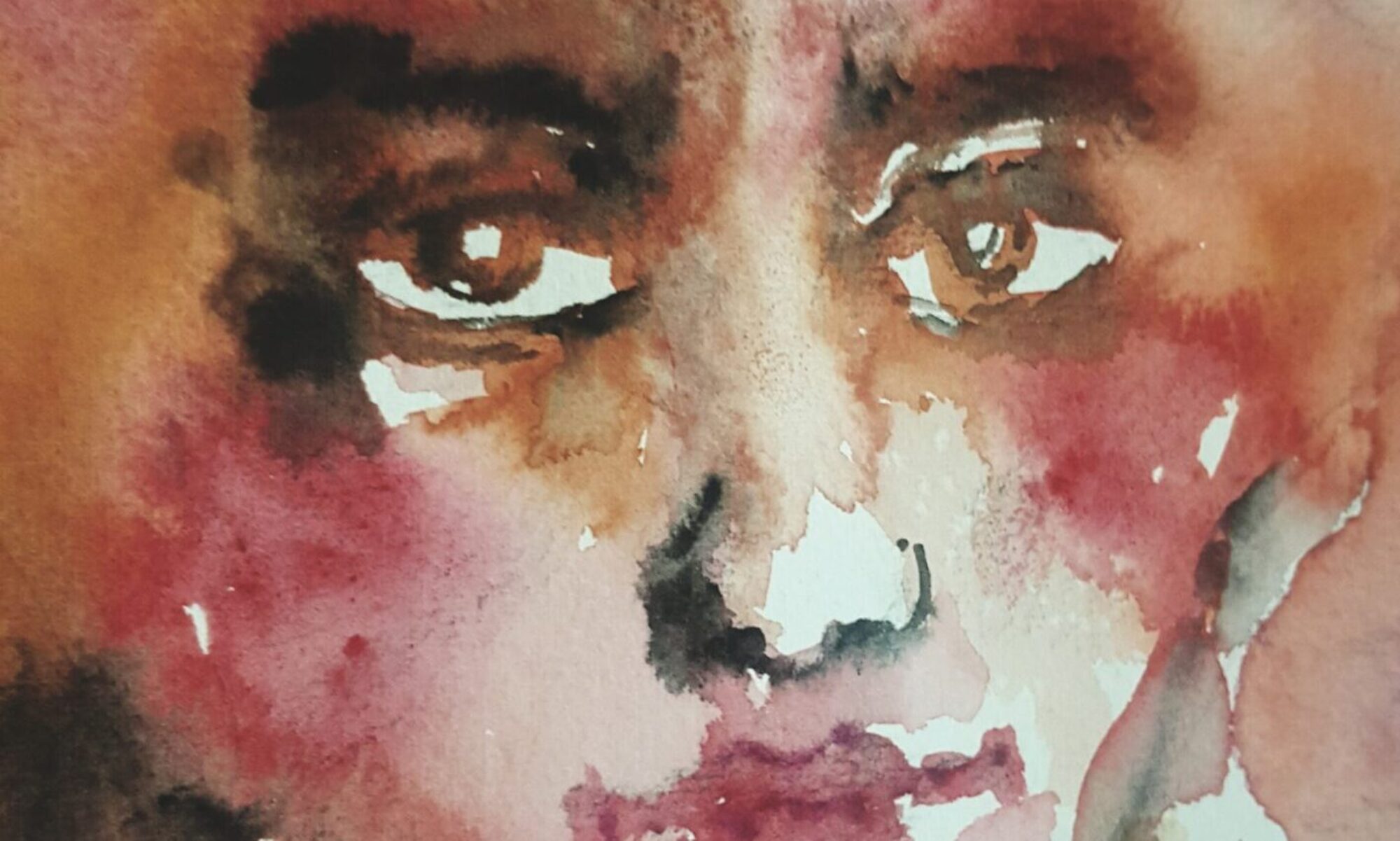Goddess Kali, also known as the ‘Dark Mother,’ is an incarnation of Parvati, the wife of the Hindu god Shiva. She is the goddess of death, time, and doomsday, invoked to slay demons in society. In Hinduism, all goddesses are ultimately one, and Kali takes different forms to help mortals comprehend her multiple possibilities. Among these, Kali is one of the most powerful.
In Sanskrit, Kali means ‘she who is black’ or ‘she who is death.’ Her dark complexion symbolizes eternal darkness, with the potential to both destroy and create. It highlights her comprehensive nature: just as all colors disappear in black, so do all names and forms in her. Often associated with sexuality and violence, Kali is also considered a strong motherly figure, embodying feminine energy, creativity, and fertility. Full-breasted, she nurtures endlessly. Her primordial nudity depicts freedom from illusion, representing total illumination.
In art, Kali is often portrayed with a blue/black complexion, naked and wearing a gilded crown. Like many Hindu deities, she is multi-armed (four or more). Her fearful symmetry as the slayer of demons shows her in a dance of death, holding a severed head. Decked in a garland of decapitated heads that signify karma, her white teeth symbolize purity, and her red lolling tongue symbolizes the consumption of evil or good. Her blood-dripping sword symbolizes knowledge that cuts through ignorance and destroys false consciousness, represented by the severed head. Kali is believed to dwell in the cremation ground, where the human cycle ends, and anger, ego, lust, attachments, and many other feelings dissolve.
Kali is particularly worshipped in eastern and southern India. Her rituals dominate Tantric iconography through symbolism, with special festivities performed in her worship on new moon nights.
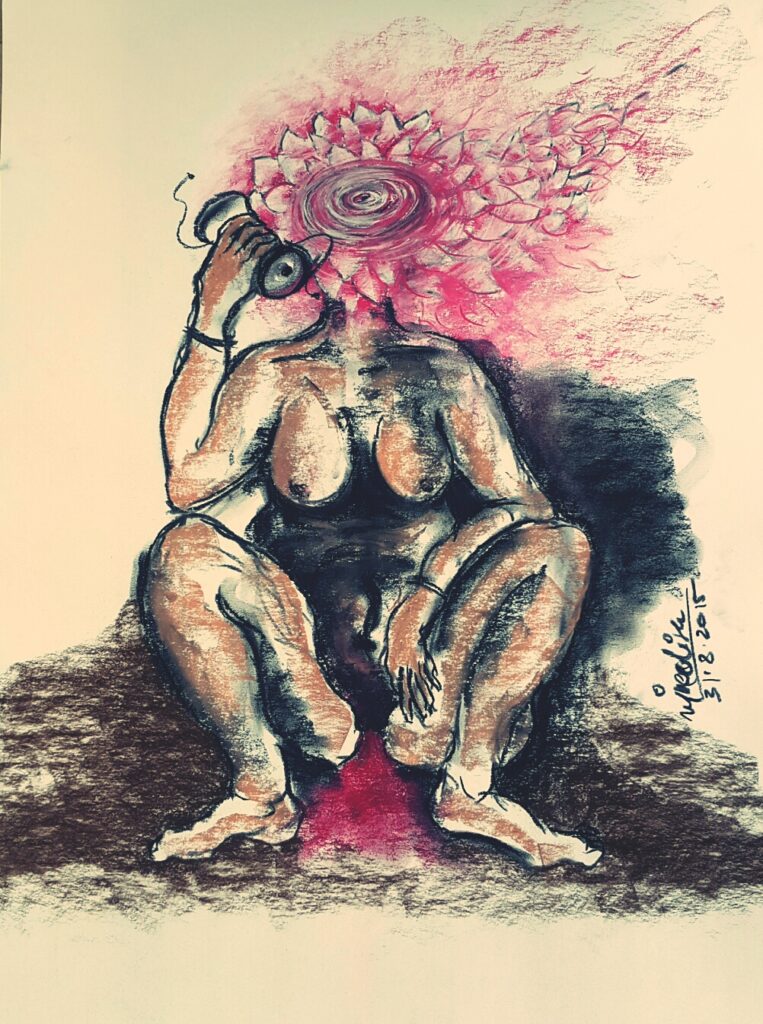
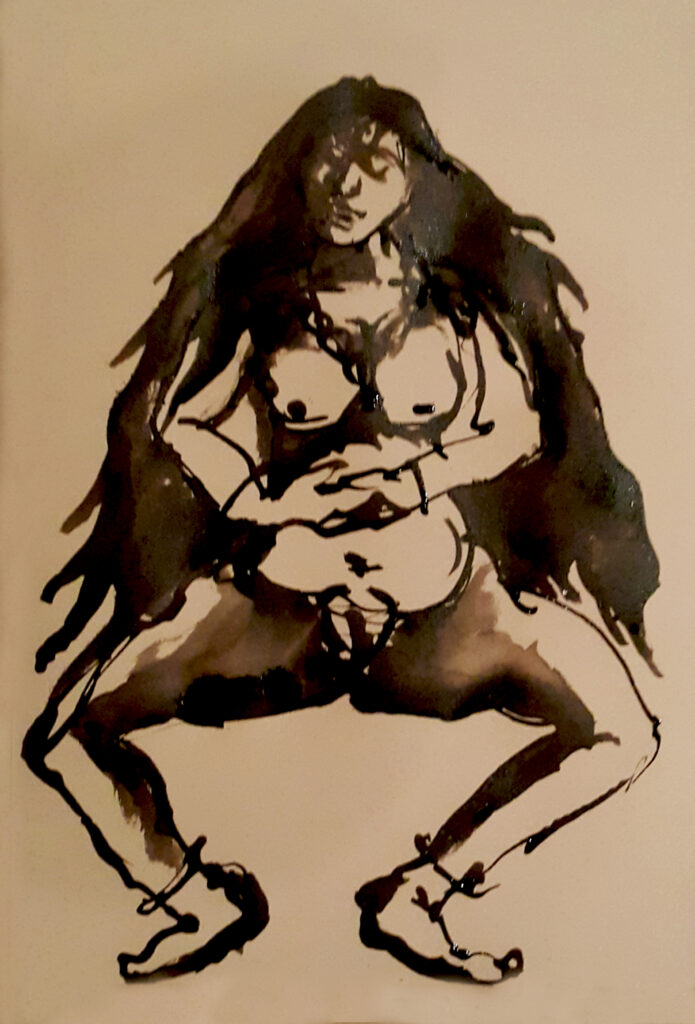
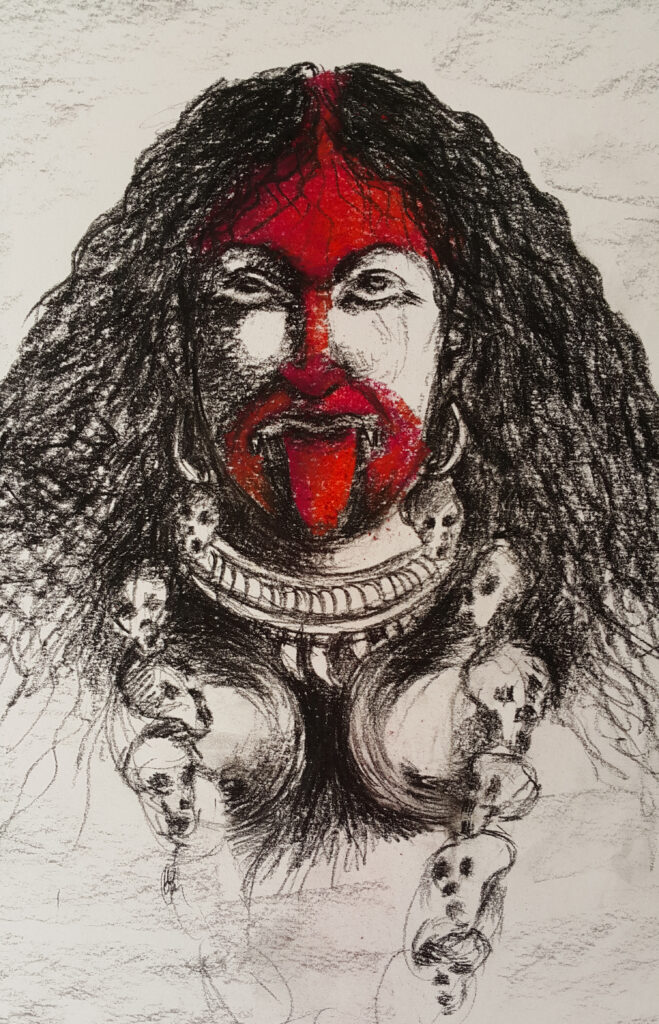
16″ x 22″, Mixmedia, 2015
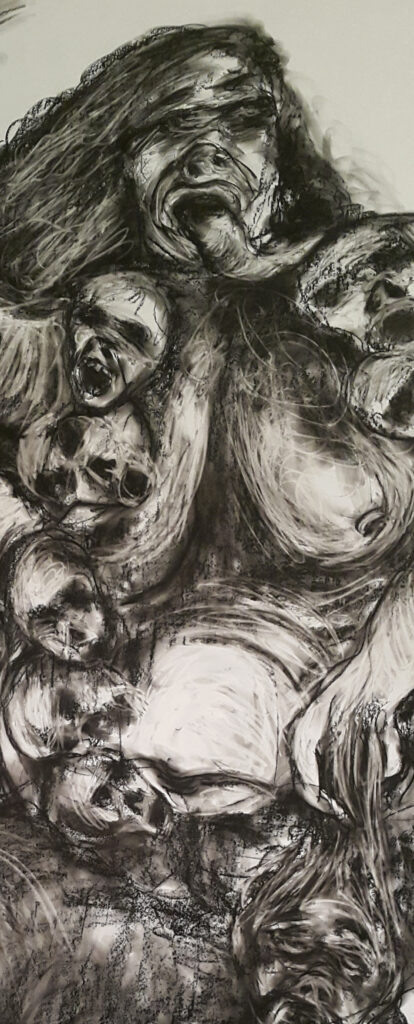
Charcoal on Paper, 2013

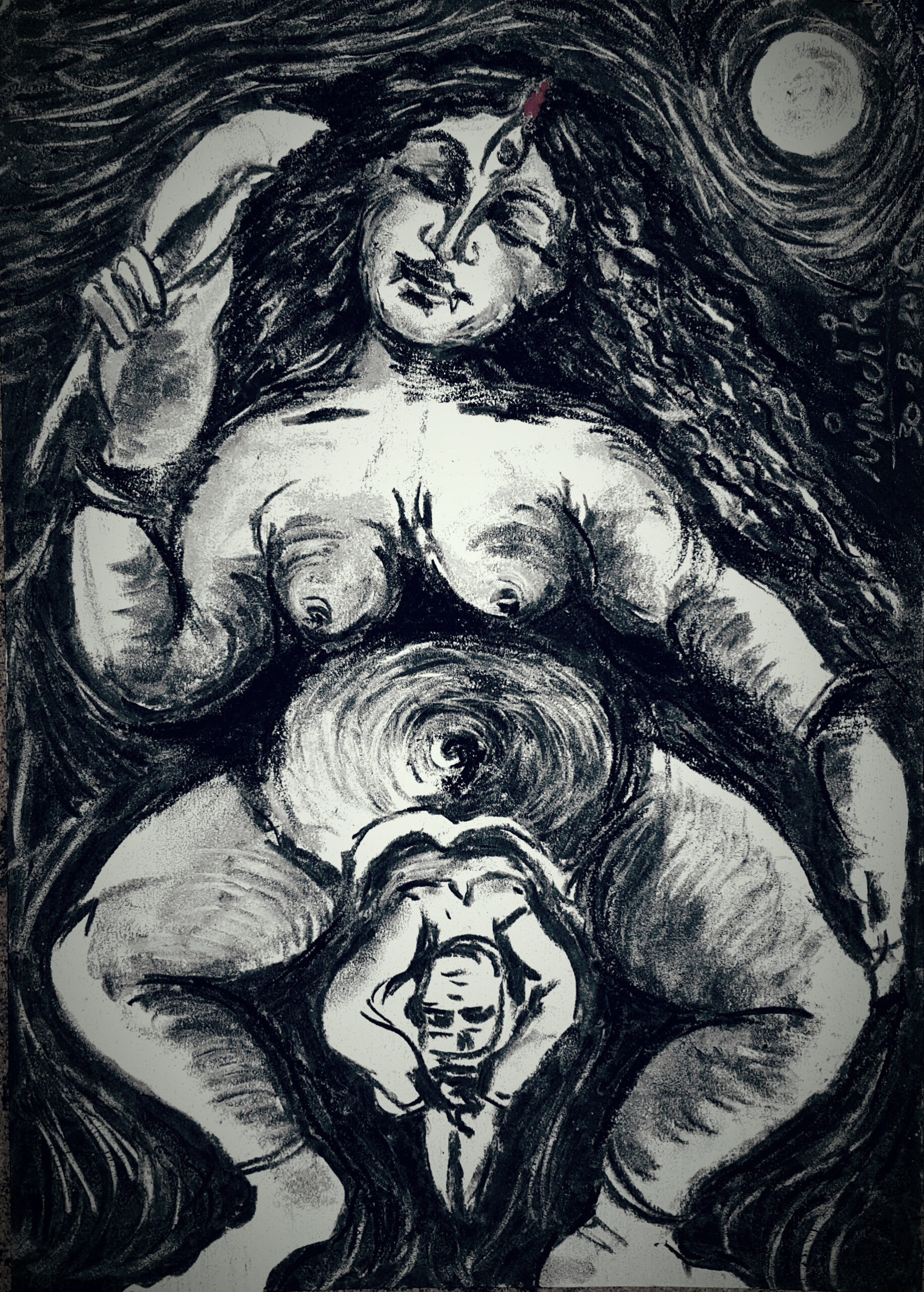
8″ x 11″, Charcoal, 2015
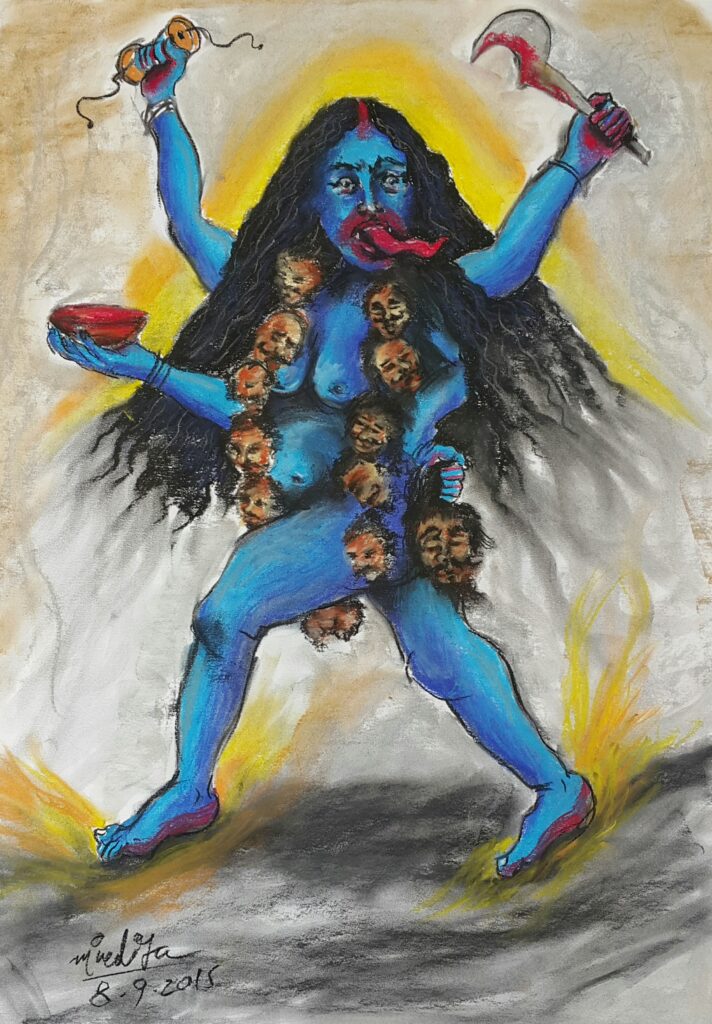
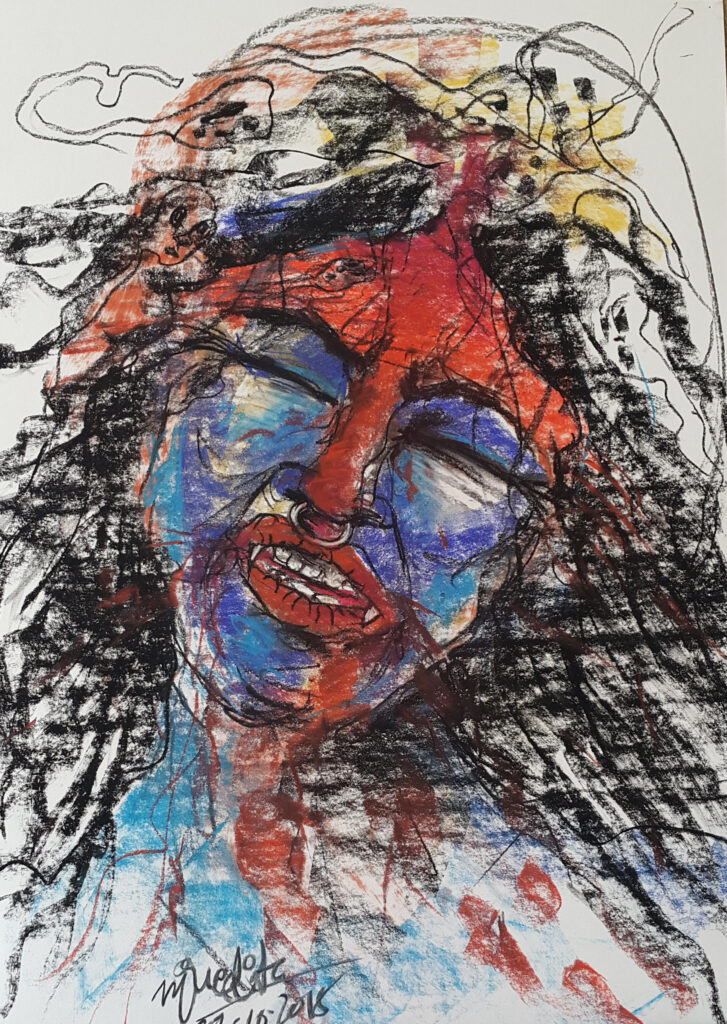


40″ x 60″, Mixmedia, 2019
